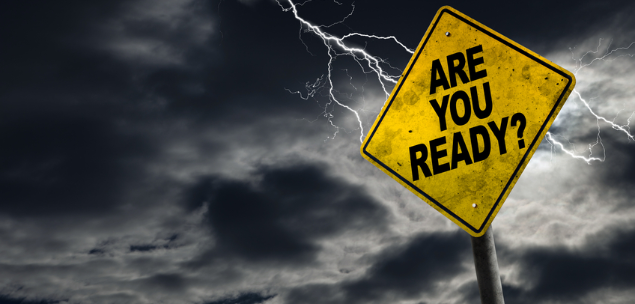Failure to implement an emergency action plan in your business could lead to serious injuries and loss of life, plus severe penalties if there is an emergency situation or disaster. Here’s a sobering statistic: work-related injuries and disease cost the Australian economy about US $78 million per year. It’s therefore imperative that you comply with the work health and safety (WHS) or occupational health and safety (OHS) laws operating in your state to territory.
All states and territories are governed by laws based on Safe Work Australia’s model WHS Act and Regulations, except for Victoria and WA, which have their own OHS laws. Regardless of where you operate, businesses and workers have obligations under law to manage risks to health and safety. To help you comply WHS and OHS legal requirements around disaster and emergency response, no matter your jurisdiction, here are some essential guidelines for your business:
Inspect your Work Area on a Regular Basis
Study the traffic in and around your workplace. Constantly monitor how people and equipment move around and stay on top of it.
Regularly inspect all corners and take notice of even the smallest element.
Monitor all aspects of operation and how different variables in the work area travel from one place to another.
Acquire sufficient knowledge about your workplace’s history in terms of geography and calamity. This will help forecast events and will serve as a good learning opportunity. Distribute this information to all members of your staff.
Devise a systematic evacuation plan
An all-encompassing evacuation procedure is required by WHS/OHS legislation. As such, this detailed plan should be in accordance with the organisation’s set standards of safety. It is best to make a list of all possible emergency scenarios and elaborate the measures to address each.
Your evacuation details should take into account personnel and equipment safety and handling.
Ensure emergency contacts are always visible
It is advisable to ensure that a list of emergency numbers is visible and readily accessible to staff. These numbers include local state emergency, fire, police, and ambulance services. The list may extend to recovery contacts such as key personalities in your organisation, including employees, as well as partners and companies like insurance, banks and suppliers.
Have an emergency kit in strategic places
As with your emergency contact numbers, your emergency kit should be deployed in a conspicuous area. The accessibility of this kit will play an important role during critical scenarios. The content of your emergency kits is directly in correlation to the nature of your industry. As such, special equipment or tools may be needed as necessary.
It is best if the kits installed are secure and waterproof. In addition to essential equipment, kits may also incorporate emergency contact numbers, a mobile phone, plastic bags, spare batteries, a torch, and a portable radio.
Designate a team leader and a communication plan
It is proven that lack of communication exponentially increases damage during disasters. Assign a team leader for every given situation – as a point person, he/she is tasked to convey orders and instructions.
Ensure their roles and responsibilities are clear and practical. Training these people is vital to the success of this endeavour. If disaster strikes, the team leader should act as a beacon for all personnel in the workplace. Each employee should be made aware of the communication plan and know who the team leaders are.
Rehearse your plan of action
They say “practice makes perfect” – this is true, particularly when disaster strikes or there is an emergency.
Well-planned communication plans and emergency protocols will be useless if not followed to the letter. The best way to make it work is to stage mock emergency scenarios and practice the corresponding course of action.
If you think that rehearsals may take away valuable time from your operations, think twice. This is a better investment than paying for deaths and injuries.
Use and identify all resources
Every emergency or disaster require a different approach or method. Have all your resources in check and keep them updated at all times.
As with rehearsing your plans of action, this presents a perfect opportunity to constantly improve and innovate. The efficiency level of your emergency procedures will be more reliable and effective.
Changes in work location and personnel movement should be updated and included in your plans. Identify the critical areas of your workplace and constantly find ways to best protect them.
An effective management plan covers recovery and continuity of operations. Contingencies should be well studied to make your business survive any given situation.
Ensure effective first aid facilities
Your first aid plan should be relative to your headcount and workplace area. As explained in the WHS Code of Practice – First Aid in the Workplace, first aid facilities play a critical role in every business or enterprise’s operations. Businesses have the strict duty to safeguard the workers and other persons in the work area given reasonable conditions.
First aid facilities should permanently have the appropriate tools and equipment to address all kinds of emergencies.
From a minor splinter to life-threatening injuries, a provision in the WHS act lists down all possible medicine and equipment needed to ensure that these are immediately addressed.
Mentioned earlier are the designation of Team leaders or point persons. Regulation 42 of the model WHS Regulations calls for this personnel to undergo rigid training and certification. It also articulates the proportionality of workers to first aiders.
Ideally, for low-risk workplaces, there should be one first aider for every fifty workers. For high-risk workplaces, there should be at least one for every twenty-five workers. For further information, consult the WHS Code of Practice – First Aid in the Workplace.
About the author
Katrina McKinnon is the Community Outreach Manager for Alsco Australia. Alsco Australia aims to help businesses create safer and healthier workplaces by providing fully-managed first aid kit rentals and first aid training services.

